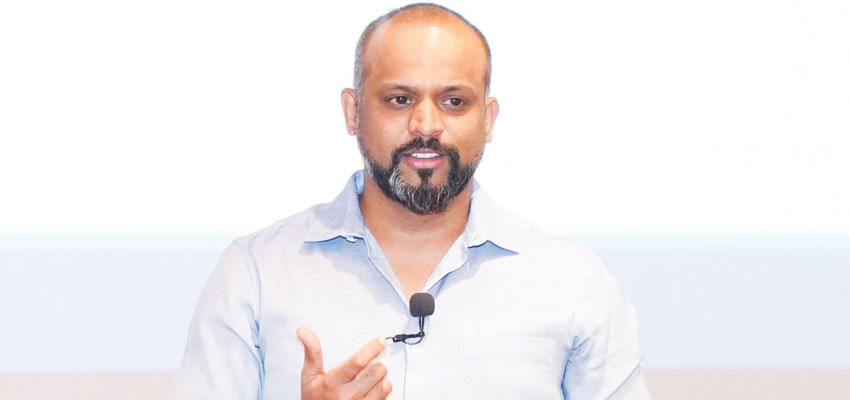Bridging Business and Technology

"With over 13 years of experience integrating business processes and technology in the field of finance, Chetan Kuknor has built a remarkable career as a business technology liaison. Currently serving as the vice president for business transformation at BNY Mellon, he works closely with operations and stakeholders to gather requirements and understand business needs. His role involves collaborating with development teams, designing solutions, and validating requirements, to align with business objectives. In converstion with Corporate Citizen, Chetan Kuknor discusses his career journey, the evolving role of technology in business transformation, and the opportunities and challenges that come with it"
Corporate Citizen: Can you give a brief about your career journey?
Chetan Kuknor: After my graduation in commerce, I got placed in Accenture. Later, I completed my MBA in finance and joined eClerx Services Ltd. In 2012, I moved to BNY Mellon, where I’ve been working ever since. During my time at eClerx, I realised that while investment banks and financial services are part of the same vertical, they operate very differently; financial services cover insurance, mutual funds, etc., while investment banks have a more specialised approach. That’s how my exposure to investment banking started. Overall, I have around 13 to 14 years of experience in financial services.
At BNY Mellon, I started in a support role for operations, managing day-to-day activities. Over time, I transitioned into project and product management and business transformation roles. As you spend more time in a company, your scope of work expands, and that’s how I moved horizontally into technology and transformation.
CC: You began with finance and now deal with technology in business. How did that transition happen?
When I started, I took the role that was available to me at the time. But, as I spent more time in the company, I got exposed to different opportunities. I was inclined towards my current role because of my competencies and the ability to solve the organisation’s challenges. However, moving into business transformation required me to learn new skills like artificial intelligence, data science, machine learning and big data. I even learned programming languages like Python, to better understand technical aspects.
Today, there’s no distinct boundary between finance and technology. No matter your field— finance, marketing or supply chain—you need to stay relevant by adopting new tools and technologies. For example, tools like ChatGPT are now essential for productivity and content creation.
CC: When did this transition happen?
Around 2016-17. Until then, I was in a support function for operations. When a new role opened within the organisation, I saw growth potential and took it. I started as a data analyst, and worked my way up to vice president of business transformation. It’s been a journey of continuous learning and taking opportunities when they came my way.
CC: What challenges did you face during this transition?
One of the biggest challenges was working with people, who had limited expertise in the new projects and roles we were developing. I had to roll up my sleeves and learn a lot on my own, taking courses and attending training sessions. Over time, I gained the ability to understand technical issues and provide solutions with appropriate timelines. Moving into a business technology liaison role required me to make decisions, which was challenging but also rewarding.
CC: What does the term ‘business technology liaison’ mean?
It means acting as a bridge between business requirements and technology. For example, if someone wants to build a platform for investors, I assess whether the investment will yield appropriate returns and within what timeframe. This role involves making strategic decisions about technology investments and ensuring they align with business goals.
Our company has around 25-26 business lines, each serving different clients. Staying competitive means implementing technologies that reduce costs and improve efficiency. My job is to streamline processes and enhance client service through technology, reducing human involvement while improving quality.
CC: How have you seen technology transform business over the years?
Technology has been crucial in transforming businesses. At BNY Mellon, older programming languages like Java and C++ became obsolete, as we moved towards more advanced tools. Staying relevant to technology means offering better platforms and services, which help retain existing clients and attract new ones.
Technology also speeds up processes. For example, stock exchange settlements that used to take five to six days, now happen almost instantly, thanks to technological advancements. And this, is just the beginning. There’s still a lot of untapped potential for growth and development.
CC: What are the pros and cons of technology in businesses?

One major con is the fear of job loss due to automation. For instance, implementing technology that reduces a team of 500 to 200 can feel threatening.
But, history shows that technological advancements often create more jobs in the long run, as happened when computers replaced handwritten processes.
On the positive side, technology increases efficiency and scalability. It allows businesses to serve more clients with less effort and at a lower cost.
However, companies that fail to adopt and sustain the right technologies, risk falling behind. Sustainability in technology becomes crucial here.
" Today, there’s no distinct boundary between finance and technology. No matter your field— finance, marketing or supply chain— you need to stay relevant by adopting new tools and technologies"
— Chetan Kuknor
CC: What do you mean by sustainability in technology?
Sustainability in technology means investing wisely in tools that align with your business’s needs and capacity. For example, if a company spends $5 billion on technology when only $1 billion was necessary, maintaining that infrastructure becomes costly and unsustainable. Businesses must calculate their investments carefully, and avoid overextending their resources.
CC: What challenges do businesses face when implementing technology?
Adoption is a key challenge. Even with the best technology, if people aren’t willing or trained to use it, it’s ineffective. For instance, a bank might develop a robust online platform, but if customers still prefer using traditional methods like the passbook printing machine, the investment loses its value.
Adoption involves creating awareness, providing training, and ensuring employees too are equipped to implement new processes. Resistance to change is natural but smooth adoption strategies can minimise it.
CC: How do you measure the success of technology integration?
There’s no direct measure, but impact assessment is crucial. If the technology implementation delivers the expected results within the projected timeline, it’s a success. Comparing your business performance to competitors using similar technologies also provides a benchmark.
Ultimately, successful technology integration is about achieving anticipated outcomes, and improving efficiency and service quality
CC: How has the role of a business technology liaison evolved over the years?
The role has expanded significantly. Earlier, the focus was on transformation, but now businesses ensure they have specialised resources with the right competencies to support technological adoption. As companies increasingly integrate technology into their processes, the need for skilled liaisons has grown.
Today, the role of a business technology liaison has become one of the most prominent in business transformation. I would recommend it to anyone inclined towards driving change and aligning technology with strategic goals.
CC: What key technologies have impacted business processes the most?
Data modeling, data science, artificial intelligence and machine learning, have been game-changers. Many organisations now have their own AI models, which shape their objectives and improve performance.
Agile methodology has also revolutionised the way companies provide technology solutions, enhancing speed and flexibility in development and implementation.
CC: How do you think AI and machine learning will shape the future of digital adoption?
AI will play a massive role in studying patterns and personalising user experiences. For example, just like how Instagram and YouTube recommend content based on your viewing habits, AI can study behaviour and adapt accordingly.
However, while AI can simplify processes and enhance convenience, it also comes with risks. The amount of data collected, from location tracking to user preferences, raises privacy concerns. Used wisely, though, AI has the potential to transform businesses, industries, and even economies.